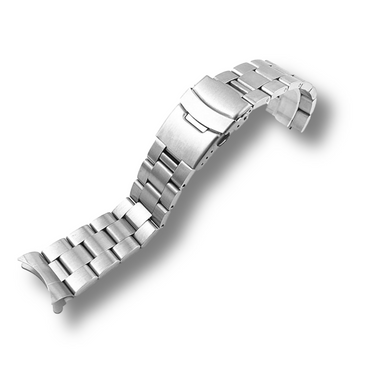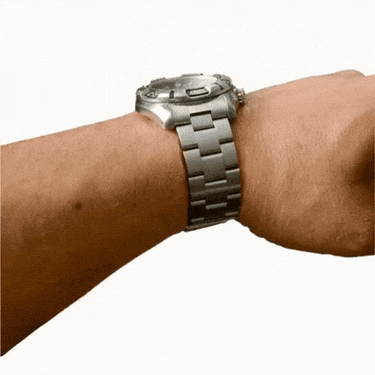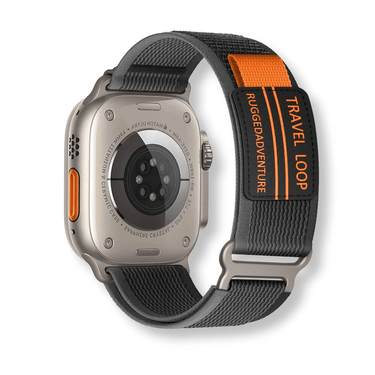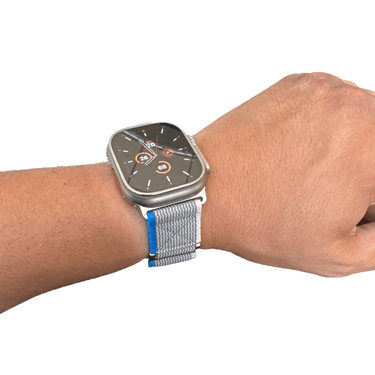Do you own an automatic watch? Do you want to make sure that your watch is always ready to wear, without requiring manual winding every time you put it on? Then a watch winder is the answer to your problems.
A watch winder is a device that keeps your automatic watch wound and ready to wear, even when you're not wearing it. When your automatic watch is not in use and sits motionless for an extended period, it will stop running.
This can be problematic if you have several watches but only wear one at a time since each of them will need winding before use. That's where a watch winder comes in handy - it maintains the motion needed to keep the mainspring wound continuously.
Common Mistakes with Watch Winders
Despite their usefulness, many people don't understand how to properly use their watch winders – even some seasoned collectors! And as a result, they end up making common mistakes that can lead to long-term damage or deteriorated performance of their beloved timepieces.
So, what are these common mistakes? Keeping reading - I'm about to unleash some truth bombs that may shock and surprise you.
From overwinding your watches to using the wrong type of winder for your specific timepiece, we've got it all covered here. Pay attention now because this knowledge might just save those precious watches and keep them running smoothly for years on end.
Buckle Up: You're Probably Making These Mistakes Too
Many people think they know how to take care of their automatic watches but overlook certain critical details when using a winder. It's easy enough to overlook something so small and seemingly unimportant like the right type of winder or specific winding needs for each particular model.
But as enthusiasts know too well- small details make all the difference when taking care of high-end timepieces. So, buckle up and get ready to learn about the ten common mistakes with watch winders that you're probably making too.
The Importance of Understanding Your Watch's Winding Needs
If you're someone who invests in quality timepieces, then you likely understand the importance of keeping your watches wound and well-maintained. However, what many watch collectors fail to realize is that different watches have different winding needs. Failing to understand these differences can lead to serious damage to your timepiece over time.
Understanding the Different Types of Watches and Their Winding Needs
Automatic watches, for example, rely on the natural movement of the wearer's wrist to stay wound. This means that if you have an automatic watch that isn't being worn regularly (or for a long period of time), it will eventually run out of energy and stop working altogether. On the other hand, manual-wind watches require regular winding by hand in order to stay running.
Then there are quartz watches, which use a battery as their power source. While these watches don't technically need winding like mechanical ones do, they still require regular maintenance to ensure that their batteries are replaced before they die completely.
Determining Your Watch's Winding Requirements
So how can you know for sure what kind of winding requirements your watch has? The first step is simply reading your watch's manual or doing some research online about your specific model. Alternatively, if you're unsure about whether your particular watch is manual-wind or automatic (or if it has any special winding needs), consider taking it into a reputable jeweler or watch repair shop for a professional opinion.
They may be able to offer advice on how best to keep your particular timepiece running smoothly for years to come. Remember: failing to understand your watch's unique needs could ultimately mean investing in costly repairs down the line – so take the time now to get informed!
The Dangers of Overwinding Your Watch
One of the most common mistakes people make with their watch winders is overwinding their watches. Overwinding can cause serious damage to your watch's movement and ultimately lead to costly repairs or replacements. When you overwind your watch, you risk damaging the mainspring, which is responsible for powering the movement.
When this happens, your watch may stop working altogether or become inaccurate. Overwinding can also cause other types of damage to your watch's movement.
For example, it can cause the gears to become misaligned or even break, which can be extremely difficult and expensive to repair. Additionally, overwinding can put undue stress on the delicate components within your watch's movement, causing them to wear down more quickly than they would otherwise.
How to Avoid Overwinding Your Watch with a Winder
Fortunately, there are several simple steps you can take to avoid overwinding your watch when using a winder. First and foremost, make sure that you are using a winder that is specifically designed for your type of watch.
Different watches have different winding needs, so it's important to choose a winder that will work well with yours. Once you have chosen the right winder for your watch, carefully read through the instructions before using it for the first time.
Pay attention to any specific recommendations regarding how long you should wind your watch for and how often. It's also important to note whether there are any specific settings you need to use on your winder in order to avoid overwinding.
If you're still concerned about overwinding despite following these steps, consider investing in a winder with an automatic shut-off feature. These winders are designed to stop winding once they reach the optimal level of tension in order to prevent overwinding from occurring accidentally.
Overwinding your watch can be a costly and avoidable mistake. By taking the time to choose the right winder for your watch, carefully reading through the instructions, and investing in a winder with an automatic shut-off feature, you can help ensure that your watch stays in excellent condition for years to come.
The Importance of Choosing the Right Type of Winder
As any watch enthusiast knows, choosing the right type of watch winder is crucial to maintaining the longevity and accuracy of your timepiece. With so many different types and brands available on the market, it can be overwhelming to determine which one is best suited for your specific watch. However, using the wrong type of winder could lead to serious consequences down the line.
The Different Types of Watch Winders
Before delving into how to choose the right winder for your watch, it's important to understand the different types available. There are two main types: single-watch winders and multi-watch winders.
Single-watch winders are exactly what they sound like – they are designed to wind one watch at a time. They come in a variety of shapes and sizes, including desktop models and portable ones that can be taken on-the-go.
Multi-watch winders, on the other hand, can accommodate several watches at once. These typically come in larger sizes and can range from compact units that hold two or three watches at a time to larger cabinets that can hold dozens.
Choosing the Right Winder for Your Watch
Choosing the right type of winder for your specific watch depends on a number of factors. One key factor is whether your watch requires winding in only one direction or in both directions. Some watches only require winding in one direction (either clockwise or counterclockwise), while others require bi-directional winding (both clockwise and counterclockwise).
Another factor is determining whether you need a programmable winder or not. Programmable winders allow you to set specific winding cycles for each individual watch based on its manufacturer's recommendations.
Consider which features you need beyond just winding capabilities - such as display case options - when selecting a winder model. Using the wrong type of watch winder can be detrimental to your timepiece.
When selecting a winder, take into account your specific watch's winding requirements, as well as any additional features you may need. By doing so, you can ensure that your watch remains accurate and functional for years to come.
The Importance of Regularly Cleaning Your Winder
Watch winders are an important investment for any watch collector. They ensure that your watches are kept wound and ready to wear at all times. However, many people make the mistake of neglecting their winders and not cleaning them regularly.
This can lead to a build-up of dust, debris, and other contaminants that can damage both the winder and your watches. Cleaning your winder regularly is essential for ensuring its longevity.
When dust accumulates on the motor and gears, it can cause excessive wear and tear, potentially leading to malfunctions or even complete failure. Additionally, dirty winders can also damage your watches by transferring dirt onto them or causing scratches if the winder's interior is not kept clean.
Tips for Properly Cleaning Your Winder
Cleaning a watch winder is not as difficult as you might think. With a few simple steps, you can keep your winder in top condition for years to come: 1. Begin by unplugging the winder from its power source before cleaning to avoid any accidents.
- Use a soft-bristled brush or cloth to remove any loose dirt or dust from the exterior of the winder. 3. Use compressed air or a vacuum cleaner with attachments to blow out or suck up any remaining debris inside the case.
- Cleanse all surfaces with a microfiber cloth using warm water mixed with mild dish soap solution (not dishwasher detergent) that won't harm plastic surfaces. 5. Rinse thoroughly with warm water until all soap residue is removed.
- Dry completely with another soft cloth before reassembling. By following these simple tips, you can ensure that your watch winder remains in top condition while keeping your valuable timepieces safe from harm.
Proper Maintenance Can Save You Money
Investing in a quality watch winder can be a significant expense, but proper maintenance can help you save money in the long run. By cleaning your winder regularly and ensuring it is well-maintained, you can prevent costly repairs or replacements down the road. Moreover, regular cleaning and maintenance can help extend the lifespan of your watches.
A dirty or damaged winder can cause undue strain on your watches while they are being wound, leading to potential damage or even complete loss of function. Cleaning your watch winder regularly should not be an afterthought.
It is an essential part of owning a watch winder and ensuring that both your investment and timepieces are protected from harm. So take care of your winders; they are taking care of those beautiful watches for you!
Section VI: Mistake #5 Not Checking Your Winder's Settings
The Importance of Checking Your Winder's Settings Periodically
Let me ask you a question: when was the last time you checked the settings on your watch winder? If your answer is "never" or "I don't remember," then you're guilty of making yet another mistake when it comes to using a watch winder. Checking and adjusting the settings on your watch winder is crucial to keeping your watches working properly.
If your winder is set incorrectly, it can overwind or underwind your watches, leading to potential damage and a decrease in accuracy. Plus, not all watches require the same winding parameters, so it's important to make sure that each watch on your winder is getting the proper amount of winding.
Tips on How to Properly Adjust Your Winder's Settings
Now that we've established why checking and adjusting your watch winder's settings is important, let me give you some tips on how to do it properly. Firstly, consult with the manufacturer of both your watch and winder.
They should be able to provide specific guidance for setting up and adjusting the device. Additionally, they may have specific recommendations for certain types of movements – such as quartz vs.
mechanical – or for different models with various complications. When setting up a new winder, be sure to follow all included instructions carefully; sometimes even small missteps can lead to disastrous consequences.
So read everything thoroughly before starting anything. Make sure that each slot in the winder has been set up correctly before adding a new watch on there.
The position of each individual timepiece can impact its movement which will alter its winding parameters. Pay attention closely while testing out different settings so that you can determine which ones work best for which watches in order not only to maintain optimal functionality, but to extend the life of your watches.
Conclusion
Through this article, we've covered some common mistakes that people make when it comes to their watch winders. Whether it's not understanding your watch's winding needs, overwinding your watch, or using the wrong type of winder for your watch, these mistakes can all lead to potential damage and issues with your timepieces. However, by following the tips and advice provided in this article, you can avoid making these mistakes and ensure that your watches are properly cared for.
At the end of the day, a watch winder is an investment in both your timepieces and your own peace of mind. By keeping your watches wound and ready to wear at all times, you'll always be able to rely on them when you need them most.
But in order to get the most out of your winder - and avoid costly repairs down the line - it's important to treat it with care and attention. So if you're a watch enthusiast who wants to get the most out of their timepieces, don't overlook the importance of a good quality watch winder.
With the right understanding of your watches' needs and proper care for your winder itself, you can ensure that both will last for years to come. And ultimately, isn't that what we all want as collectors - beautiful pieces that we can cherish for a lifetime?

























